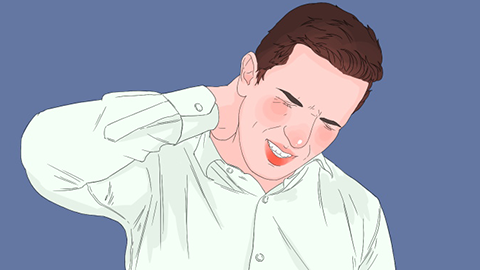What are the symptoms of cervical dislocation?
Under normal circumstances, cervical dislocation—defined as abnormal positioning of the cervical joints—may trigger a variety of noticeable symptoms, primarily including severe neck pain, significantly restricted neck movement, limb numbness or weakness, headache and dizziness, as well as swallowing or breathing difficulties. A detailed analysis is as follows:

1. Severe neck pain: After cervical dislocation occurs, surrounding cervical tissues may be stretched, compressed, or injured, often leading to intense neck pain. The pain is typically persistent, described as aching or stabbing, and significantly worsens when bending the head forward, tilting it backward, or turning the neck.
2. Severely restricted neck movement: Due to the misalignment of cervical joints, normal neck motion becomes greatly impaired. Patients may find it difficult or impossible to flex or extend the neck, with markedly reduced range of motion when turning the head side to side, or even complete immobility. Attempting forced movement usually intensifies the pain.
3. Limb numbness or weakness: If the dislocation compresses nearby nerve roots or the spinal cord, nerve signal transmission can be disrupted, resulting in numbness in the upper or lower limbs—such as tingling in the fingers or arms, or diminished sensation in the legs and feet. This may also be accompanied by muscle weakness, such as difficulty holding objects (leading to frequent dropping) or leg instability while walking.
4. Headache and dizziness: Cervical dislocation may impair blood flow in neck vessels or irritate surrounding nerves, thereby triggering headaches. These headaches are typically localized in the occipital region or back of the head and characterized by a throbbing or pulsating sensation. Additionally, insufficient cerebral blood supply may lead to dizziness, with patients often experiencing vertigo or a spinning sensation.
5. Swallowing or breathing abnormalities: Severe cervical dislocation may compress tissues related to the pharynx or trachea, causing dysphagia. Patients may feel a foreign body obstruction in the throat during eating or drinking, making swallowing difficult. If the dislocation worsens and compresses the trachea, respiratory function may also be affected.
When symptoms suggestive of cervical dislocation appear, neck movement should be stopped immediately, and the head should not be moved carelessly to prevent further injury. It is essential to promptly seek evaluation at a qualified medical facility. After determining the severity of the dislocation, treatment and rehabilitation should be carried out under professional medical guidance.





